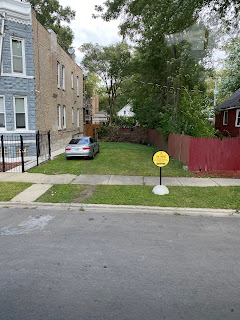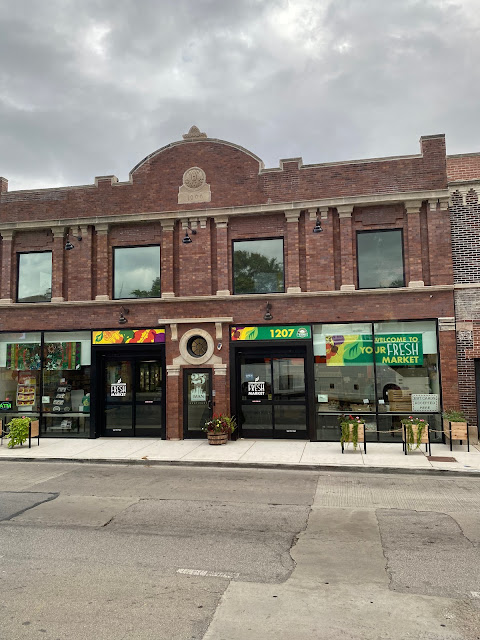One of the most noticeable aspects of Englewood are the numerous, random vacant lots scattered throughout the community.
These lots were not always vacant. In fact, the neighborhood has numerous examples of a rich and thriving past.
But researcher Amber Hendley found that the predatory and racist housing policies of the 1950s - 1970s effectively robbed the black residents of the neighborhood of $4 BILLION, a conservative estimate. You can read more about Hendley's research in her co-authored article from Duke University, The Plunder of Black Wealth in Chicago: New Findings on the Lasting Impact of Predatory Housing Contracts. These contracts along with redlining, white flight, and other racist practices, led to more than 600 homes being stolen out from under black residents who lost an entire generation of wealth.
Tonika Johnson is attempting to shed light on the scope of this injustice. Her new project Inequity for Sale publicly raises awareness of the lots that were stolen from black families. She places signs marking the lots that were taken from black families using land contracts. The Chicago Tribune explains that here. You can see one of the signs in the picture below where we stopped to plant love in the ground and spread the healing and love to the neighborhood.
Another result of the housing policies was disinvestment in the neighborhood. The shopping center at 63rd and Halsted was, at one time, the 2nd largest shopping center in the city. But for decades, retailers have moved out including grocery stores resulting in a food desert. Although Whole Foods opened up at 63rd and Halsted, the neighborhood remains strikingly void of grocery stores.
But another sign of progress besides Whole Foods is the Fresh Market, a co-op that opened recently.
Another example of disinvestment is the closure of the Greenline El stop at Racine.
Despite all of the challenges and the legacy of institutional racism, Englewood is full of hope and resilience. I saw churches, community groups, street art, mosaics, and schools. This is the Englewood that rarely gets covered in the media.
And as the Englewood community organization R.A.G.E. points out in this mural,
Black culture influences the whole world.
Tonika's work is helping to revitalize Englewood through the UnBlocked Englewood project featured on the Chicago Bungalow Association website.















No comments:
Post a Comment